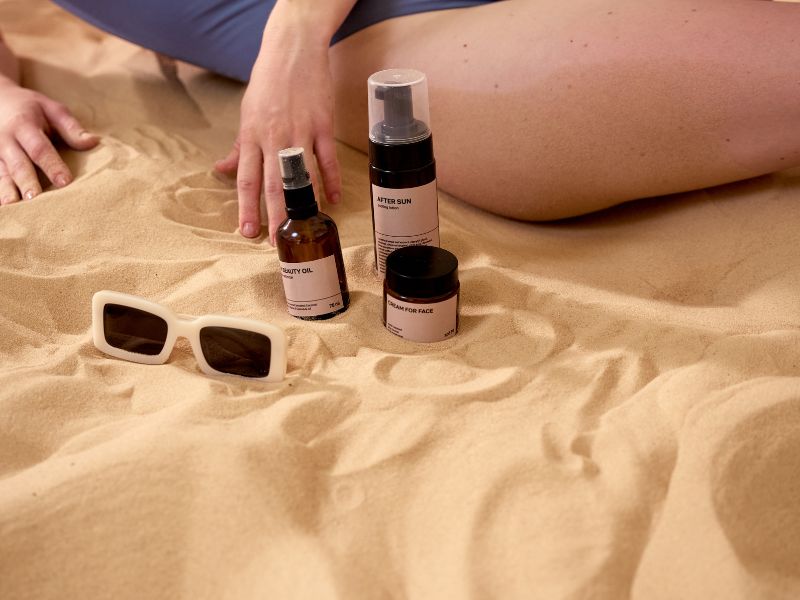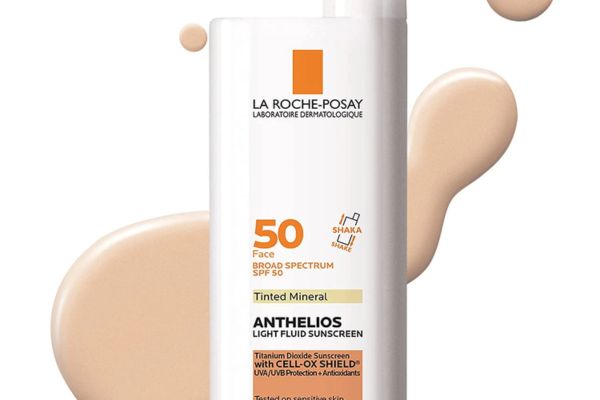Sunscreens are a crucial part of skincare routines worldwide, especially with growing awareness about the dangers of UV exposure. Among various active ingredients in sunscreens, zinc oxide has gained substantial attention due to its natural mineral properties and effective UV protection. However, as the use of zinc oxide in sunscreens has become more widespread, some concerns have emerged regarding its potential downsides. This article looks into these disadvantages, weighing the implications of zinc oxide used in sunscreens for both individual users and the environment.
Understanding Zinc Oxide in Sunscreen Formulations
Zinc oxide is a mineral compound commonly used as an active ingredient in physical, or “mineral,” sunscreens. Unlike chemical filters like avobenzone or oxybenzone, which absorb UV radiation, zinc oxide creates a physical barrier on the skin that reflects both UVA and UVB rays, providing broad-spectrum protection. It is praised for its stability under sunlight, non-comedogenic nature, and suitability for sensitive skin, making it a popular choice among dermatologists and consumers alike.
Yet, despite these benefits, there are specific disadvantages associated with zinc oxide sunscreens that often go overlooked. These disadvantages can be broken down into three primary areas: health-related concerns, environmental impact, and aesthetic or usability issues.
Health-Related Disadvantages Of Using Zinc Oxide In Sunscreen
1. Potential for Skin Irritation and Allergic Reactions
Although zinc oxide is generally regarded as safe for most skin types, it can still irritate, particularly for those with very sensitive skin. Some users report experiencing mild to moderate irritation, redness, or even itching after applying zinc oxide-based sunscreens. While this reaction is uncommon, it can still occur, particularly with high concentrations of zinc oxide. In some cases, it may be attributed to a user’s sensitivity to zinc itself or other ingredients in the sunscreen formulation that act as stabilizers or preservatives alongside zinc oxide.
2. Formation of Free Radicals Under Sun Exposure
When zinc oxide particles are exposed to UV radiation, they have the potential to generate free radicals, which are unstable molecules that can cause cellular damage. In theory, these free radicals can damage skin cells and contribute to premature ageing or even skin cancer in the long term if the skin is exposed to excessive sunlight. While sunscreen formulations containing zinc oxide are usually combined with stabilizing agents to limit free radical formation, questions remain about the long-term effects of cumulative exposure. Recent studies suggest that while the risk may be low, it cannot be entirely dismissed, especially when used daily and reapplied frequently.
3. Concern Over Nano Zinc Oxide Particles
Nano-sized zinc oxide particles, which are smaller than traditional micro-sized particles, are frequently used in modern sunscreens to address aesthetic concerns like the white cast (discussed in further detail below). However, the use of nano zinc oxide raises additional health concerns due to the possibility of skin penetration and cellular absorption. Although research is still ongoing, some studies have indicated that nanoparticles could penetrate the upper layers of the skin, especially if the skin is damaged, allowing these particles to enter the bloodstream. While regulatory bodies such as the FDA consider nanozinc oxide safe, the potential health implications of long-term exposure remain uncertain, especially since nanoparticles have unique chemical properties that could behave differently than larger particles.
Environmental Disadvantages Of Using Zinc Oxide In Sunscreen
1. Impact on Marine Life and Coral Reefs
Zinc oxide, like other sunscreen ingredients, can wash off the skin and into oceans, rivers, and lakes when people swim or shower. This runoff contributes to water pollution, and research shows that zinc oxide can have detrimental effects on aquatic life, particularly coral reefs. Studies have found that zinc oxide, along with other mineral and chemical sunscreen ingredients, can contribute to coral bleaching—a process where corals expel the algae they rely on, ultimately leading to coral death.
The mechanisms by which zinc oxide damages coral are complex but are believed to involve the formation of hydrogen peroxide and other reactive oxygen species when zinc oxide interacts with UV light in seawater. These compounds can interfere with the health of coral reefs and other marine organisms, compromising biodiversity in sensitive marine environments. Given the growing concern over coral bleaching and ocean pollution, some regions and countries have already begun to regulate or ban certain sunscreen ingredients, including zinc oxide.
2. Toxicity to Aquatic Organisms
Beyond coral reefs, zinc oxide can also be toxic to other forms of marine life. Studies have shown that high concentrations of zinc oxide in aquatic environments can impair the growth, reproduction, and behaviour of certain fish, invertebrates, and algae. The nano-sized particles are particularly problematic, as they can be more readily ingested by small organisms and can bioaccumulate up the food chain. Given the role of these small organisms in the broader ecosystem, the presence of zinc oxide in water sources can have far-reaching effects on aquatic biodiversity and ecosystem health.
3. Persistence in the Environment
Another environmental disadvantage of zinc oxide is its persistence in water and soil. Zinc oxide does not break down easily, which means that once it enters an ecosystem, it remains there for a prolonged period. This persistence allows it to accumulate in sediment and potentially affect organisms at different trophic levels over time. The environmental impact of this accumulation is still under investigation, but early research indicates that it may pose risks to long-term ecosystem stability.
Aesthetic and Usability Disadvantages Of Using Zinc Oxide In Sunscreen
1. White Cast and Residual Opacity
One of the most well-known drawbacks of zinc oxide sunscreens is their tendency to leave a visible white cast on the skin. This whitening effect is a result of the reflective nature of zinc oxide particles, which do not easily blend into the skin. For individuals with lighter skin tones, this may be a minor inconvenience; however, for those with medium to darker skin tones, the white cast can be quite noticeable and undesirable.
This effect can discourage people from using zinc oxide sunscreens consistently, potentially reducing overall sun protection. Though nano zinc oxide was developed partly to address this issue, it may not eliminate the white cast, particularly in higher SPF formulations, where more zinc oxide is needed to achieve effective UV protection.
2. Heavier, Greasier Texture
Zinc oxide sunscreens are also often criticized for their thick, sometimes greasy texture. Due to the way zinc oxide formulations are created to ensure a consistent, even layer on the skin, they can feel heavier compared to chemical sunscreens, which tend to be thinner and more fluid. This consistency can make zinc oxide sunscreens challenging to apply smoothly and may feel uncomfortable, especially for those with oily or acne-prone skin types.
3. Difficulty in Removing from Skin
Zinc oxide, given its physical properties, can be more challenging to remove from the skin compared to chemical sunscreens. This difficulty is often more pronounced with water-resistant formulations, as they are designed to adhere to the skin even when exposed to water and sweat. Proper removal may require double cleansing, typically using an oil-based cleanser followed by a water-based cleanser, which can be time-consuming and may not suit everyone’s skincare routine. The residue left on the skin may lead to clogged pores, increasing the risk of breakouts, especially for those with acne-prone or combination skin.
Alternatives to Zinc Oxide Sunscreens
Given these potential disadvantages, some users may seek alternatives that offer effective sun protection without these associated drawbacks. Chemical sunscreens, which use ingredients like avobenzone, octocrylene, or homosalate, are lighter in texture and do not leave a white cast. However, these options come with their disadvantages, such as the potential for skin irritation and environmental concerns. Titanium dioxide, another mineral sunscreen ingredient, is often used alongside zinc oxide, as it provides a lighter, albeit slightly less broad-spectrum protection.
Recently, sunscreen technology has advanced to include non-nano and encapsulated forms of zinc oxide and other UV filters. These innovations aim to reduce the environmental impact and aesthetic drawbacks of traditional zinc oxide formulations, potentially providing more user-friendly and eco-conscious alternatives.
The Verdict: Is Zinc Oxide in Sunscreen Worth the Trade-Offs?
While zinc oxide sunscreens remain a highly effective, broadly protective option against UVA and UVB rays, they do have notable disadvantages. The potential for skin irritation, the formation of free radicals, environmental harm, and the aesthetic limitations of zinc oxide sunscreens should all be carefully considered. Additionally, with the growing awareness of marine conservation, the environmental impact of zinc oxide is an increasingly critical issue.
In deciding whether to use zinc oxide sunscreens, individuals should weigh the benefits against the potential downsides, keeping in mind their skin type, personal values regarding environmental conservation, and preference for specific textures or finishes in skincare products. For those who prioritize natural ingredients, broad-spectrum protection, and have sensitive skin, zinc oxide remains a viable choice. However, for users concerned about white cast, texture, or environmental impact, exploring alternatives or new formulations of mineral sunscreens may offer a better balance.
Ultimately, the choice of sunscreen should be informed by an individual’s unique needs, lifestyle, and environmental considerations, underscoring the importance of continued innovation and transparency in sunscreen formulation.






